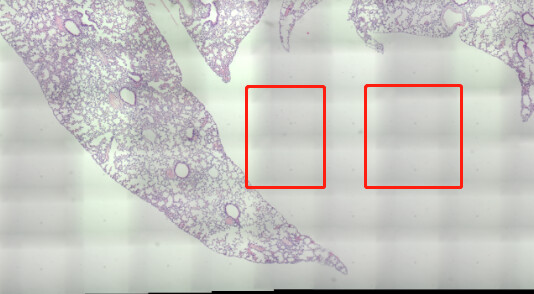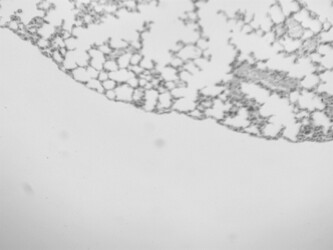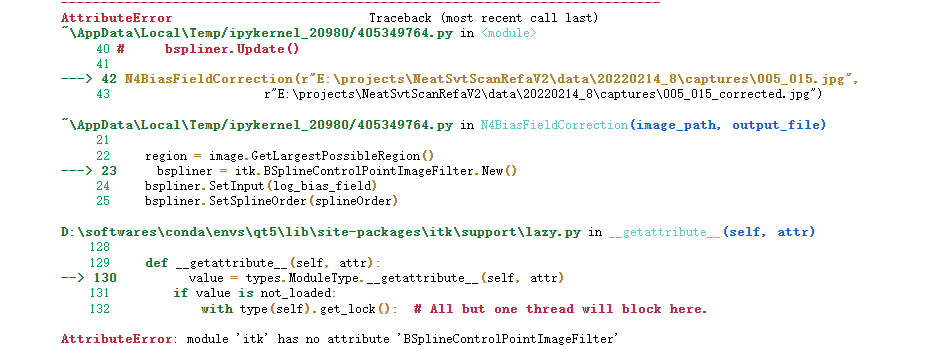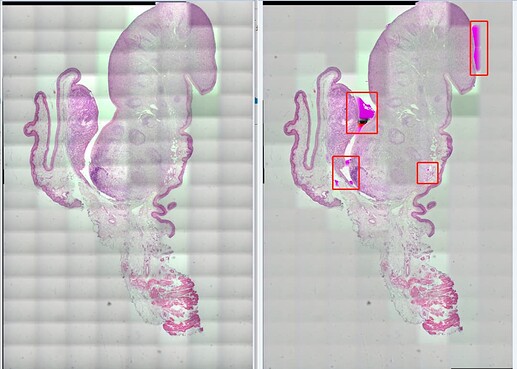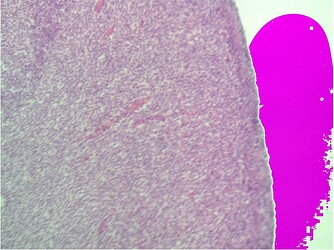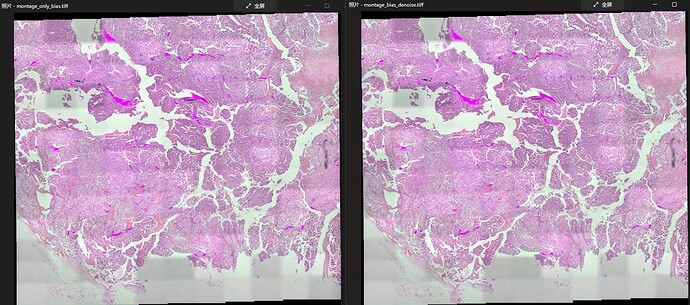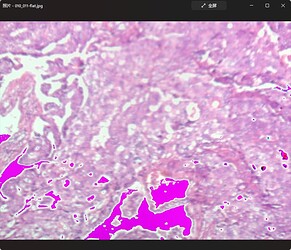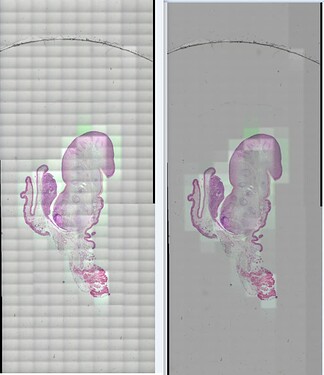hello @zivy sor for the idiot question, does “apply it to the original three channel image” means that apply the correction steps to all the 3 channels like below
I = (
I * sitk.Cast(I <= 0.0031308, sitk.sitkFloat32) * 12.92
+ I ** (1 / 2.4) * sitk.Cast(I > 0.0031308, sitk.sitkFloat32) * 1.055
- 0.055
)
def gamma_correction(I):
# nonlinear gamma correction
I = (
I * sitk.Cast(I <= 0.0031308, sitk.sitkFloat32) * 12.92
+ I ** (1 / 2.4) * sitk.Cast(I > 0.0031308, sitk.sitkFloat32) * 1.055
- 0.055
)
return sitk.Cast(sitk.RescaleIntensity(I), sitk.sitkUInt8)
channels = [
sitk.VectorIndexSelectionCast(color_input_image, i, sitk.sitkFloat32)
for i in range(color_input_image.GetNumberOfComponentsPerPixel())
]
res = [gamma_correction(c) for c in channels]
and then compose 3 channel to rgb
corrected_image_full_resolution = sitk.Compose(res)
corrected_image_full_resolution = sitk.Cast(corrected_image_full_resolution, sitk.sitkVectorUInt8)
this did not work to even the illumination
or it means that just replace the sitk.ReadImage(image_path, sitk.sitkFloat32) to srgb2gray result
like this below
def srgb2gray(image):
# Convert sRGB image to gray scale and rescale results to [0,255]
channels = [
sitk.VectorIndexSelectionCast(image, i, sitk.sitkFloat32)
for i in range(image.GetNumberOfComponentsPerPixel())
]
# linear mapping
I = 1 / 255.0 * (0.2126 * channels[0] + 0.7152 * channels[1] + 0.0722 * channels[2])
# nonlinear gamma correction
I = (
I * sitk.Cast(I <= 0.0031308, sitk.sitkFloat32) * 12.92
+ I ** (1 / 2.4) * sitk.Cast(I > 0.0031308, sitk.sitkFloat32) * 1.055
- 0.055
)
# i change sitkUInt8 to sitkFloat32 as the N4BiasFieldCorrectionImageFilter didn't support sitkUInt8
return sitk.Cast(sitk.RescaleIntensity(I), sitk.sitkFloat32)
def N4BiasFieldCorrection(image_path, output_file):
color_input_image = sitk.ReadImage(image_path)
inputImage = srgb2gray(color_input_image)
image = inputImage
maskImage = sitk.OtsuThreshold(inputImage, 0, 1, 200)
image = sitk.Shrink(inputImage,
[int(16)] * inputImage.GetDimension())
maskImage = sitk.Shrink(maskImage,
[int(16)] * inputImage.GetDimension())
corrector = sitk.N4BiasFieldCorrectionImageFilter()
corrector.SetSplineOrder(3)
corrector.SetWienerFilterNoise(0.01)
corrector.SetBiasFieldFullWidthAtHalfMaximum(0.15)
corrector.SetConvergenceThreshold(0.00001)
corrector.SetMaximumNumberOfIterations([1, 1, 1, 1])
corrected_image = corrector.Execute(image , maskImage)
log_bias_field = corrector.GetLogBiasFieldAsImage(inputImage)
bias_field = sitk.Exp(log_bias_field)
corrected_image_full_resolution = sitk.Compose([sitk.VectorIndexSelectionCast(color_input_image, i, sitk.sitkFloat32)/bias_field for i in range(3)])
corrected_image_full_resolution = sitk.Cast(corrected_image_full_resolution, sitk.sitkVectorUInt8)
sitk.WriteImage(corrected_image_full_resolution, output_file)
the color changed in its result too, and it does gamma correction twice i think
if both the 2 version above not what you mean, how to apply it to the original three channel image, i know rgb image can trans to hsv image, the v channel represent the intensity, but grey image only has one channel, how can i extract its intensity features and apply it to the original three channel
